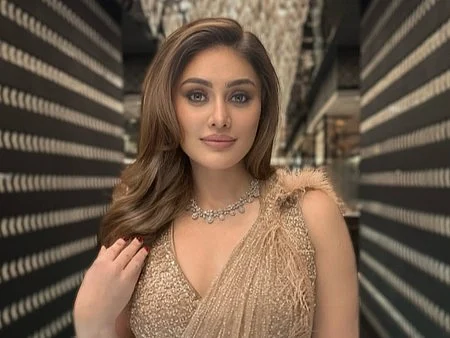Inside the chaos at Shefali Jariwala’s funeral: Fan falls, Indian paparazzi criticised, stars school media
India's popular paparazzo Viral Bhayani opens on why funeral coverage is complex grey area

A young fan tripped and fell flat on his face—phone still recording—as TV actress Shehnaaz Gill stepped out to pay her final respects to late actress Shefali Jariwala. Around him, a crowd of onlookers and paparazzi surged forward, jostling for space, for the perfect frame—for content.
What unfolded as a masked-up Gill tried to fight tears wasn’t just a sombre farewell to a beloved TV personality—it was a spectacle. And once again, the question rears its head: where do we draw the line?
As videos from the funeral flooded Instagram and YouTube, many viewers expressed their outrage.
Several television actors, visibly shaken by Jariwala’s sudden demise, were seen schooling the media.
“Please, have some respect,” one star snapped as a camera lens hovered a little too close. Another simply asked how she can make her way to the car if they are blocking her way.
This isn't the first time Indian paparazzi have come under fire for their coverage of celebrity funerals. But this time, the collective discomfort—online and offline—felt louder.
The tragic death of Jariwala, best known for her song Kaanta Laga and subsequent stints on reality television, has sparked a renewed conversation on how we cover grief—and why.
‘I haven’t slept since the news broke’: Viral Bhayani speaks exclusively to Gulf News
Veteran paparazzo Viral Bhayani, whose name is synonymous with celebrity coverage in India, spoke exclusively to Gulf News about the emotional toll and ethical dilemmas that come with covering the death of a public figure.
“I haven’t slept since the news emerged,” he admits. “People think we just show up with cameras and shoot. But it takes a toll. Shefali was someone I had known personally, and hearing of her death hit hard.”
Bhayani is no stranger to criticism. “People assume we’re vultures circling grief. But think about it—when a political figure dies, entire funerals are shown live on TV. That’s considered respectful. So why the double standards when it comes to celebrities?”
Clicks without context?
In an era where views don’t always equal value, is the coverage even worth it?. Do they make money off it, we ask.
“Honestly, we don’t make money off funerals,” he says. “YouTube demonetises it. Instagram may take it down. You get views, not revenue. It’s not about clicks. It’s about documenting it kindly—without exploiting someone’s worst moment.”
Still, the grey areas persist. Do you pan away when Shehnaaz Gill is struggling to contain her grief, overwhelmed with emotion? Do you wait for a nod before filming a grieving co-star? Or do you go live, because if you don’t, someone else will?
It’s a moral minefield, and Bhayani admits the rules are blurry. “Be silent. Don’t make noise. Don’t force anyone to talk. Follow a protocol—even if it’s unspoken. And stay away from the immediate family unless they’ve made it public.”
The public's right to see Vs a celebrity’s right to mourn
Another long-standing argument is that celebrities have always lived public lives. Death doesn’t change that.
“If someone spent decades connecting with millions of fans, are we wrong to let those fans witness their final goodbye?” Bhayani asks.
A culture at a crossroads
In the age of virality, even mourning seems to have become a public performance. The cringe-inducing reel footage on Instagram of a young man crashing to the pavement while trying to record Shehnaaz Gill’s exit from the funeral is a grim reminder of how far things have spiraled.
But the moment that cut through the noise came from Shefali Jariwala’s grieving husband, Parag Tyagi, who stepped forward to make an emotional, public appeal. With folded hands, he asked the paparazzi gathered:
“Please don’t make this a spectacle,” he said. “Let her just be happy. Let her be in peace. Please stop this. Just don't do this anymore.”
His words weren’t dramatic—they were devastatingly human. A simple plea to let a woman, loved and lost, go with dignity. The quiet force of his request underscored what even industry insiders and fans have been wrestling with: Where do we draw the line?
Even seasoned paparazzi like Viral Bhayani took note. “You have to make your own call,” he says.
“Don’t go too close. Don’t chase the crying. Be subtle. And never forget, one day it could be your loved one. Would you want a camera in your face then?”
There’s a strange cruelty in asking someone to walk past cameras while grieving, only to have that moment become a viral reel. There’s also a strange compulsion among us—the audience—to keep watching.
Maybe the answer lies in Bhayani’s parting words: “We have to make our own calls. Don’t go too close. Don’t chase the crying. And never forget: one day, you’ll be the one grieving. Would you want a camera in your face then?”
Network Links
GN StoreDownload our app
© Al Nisr Publishing LLC 2025. All rights reserved.